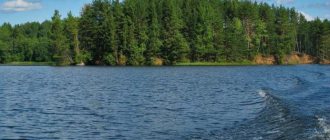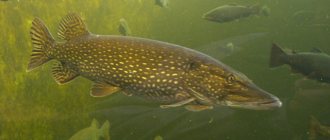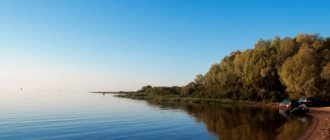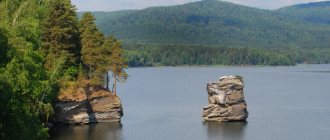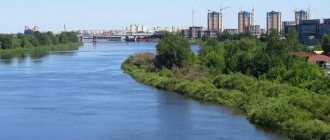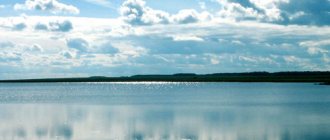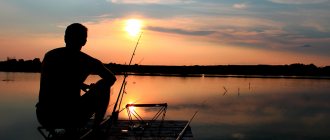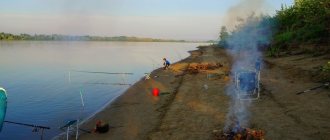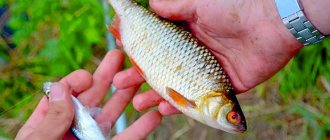Karelian whitefish fishing
Among the numerous fish that belong to the salmon family that live in the waters of Karelia, whitefish takes pride of place. If you do not have your own home in Karelia, then today you can easily rent a house on the shore of a lake in this region or near another body of water you like. Karelia is an incredibly beautiful Russian corner of Russia, a region rich in natural resources.
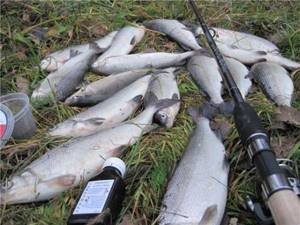
Whitefish is a rather cunning fish, so the angler must always be on alert
Whitefish can grow to a considerable weight - up to five kilograms. And at the age of three years they begin to spawn for the first time. Whitefish prefers to stay in the depths and can only occasionally be seen in shallow water. It feeds on a wide variety of insects and crustaceans.
Spring-summer whitefish fishing begins as soon as the snow melts, and then when the water in the reservoir becomes clear and clean. Most often, whitefish are caught on a light fiberglass rod, which can be used to make long casts, perform maneuvers, and also catch large-sized fish. The thickness of the main line is 0.22–0.25 mm, the diameter of the leads is 0.15–0.17 mm. The float is most often the most common: made of polystyrene foam, oblong in shape with an elongated antenna and a short keel, but quite weighted. The tackle is equipped with several sinkers, the heaviest sinker is attached closer to the float, and the lightest one is attached to the hook. The coil needs an inertial one. The most important part of the equipment is a small jig with a cambric attached to the hook.
Since the beginning of summer in Karelia is marked by the massive appearance of mosquitoes, which gather in clouds over the reservoir, and at the same time, often end up in this water, and this is all the whitefish needs.
From mid-July with the onset of summer heat and until September, the time comes that is not acceptable for fishing for whitefish, since nature itself provides the fish with natural food, so any bait and tricks of the fisherman are unlikely to be of interest to the fattened fish.
In mid-autumn, the whitefish goes to spawn, so it begins to actively eat and, as a result, the bite resumes. This is the most successful time for catching whitefish in Karelia. In the fall, whitefish can be caught even from the shore, the only thing is that only small fish can be caught from the shore, and for a large trophy it is best to go to the deeper parts of the reservoir, near the fairway.
Whitefish bites are very sharp. As if taking off, the whitefish swims diagonally towards the bait, lying on its side, and having grabbed the prey, it swims into the depths, while the float dives sharply. But there are exceptions, since whitefish is a rather tricky fish. Having grabbed the bait, he may freeze in place; in this situation, the float will slowly sink, and the fisherman will get the impression that the tackle has caught on an underwater obstacle. Once hooked, the whitefish begins to actively resist. Therefore, it is best to catch it from a boat with a partner to help each other while fishing (it’s also worth catching salmon). Often the whitefish goes under the boat, and when they pull it closer to the shore, it generally turns over on its back and swims into the depths. At this point the hook will often fly out of the fish's mouth.
comments powered by HyperComments
Tackle for float fishing and jig fishing
To catch whitefish with a fishing rod, you need a telescopic rod of three or four meters with a reliable reel for successfully landing large fish. There is no need to save money on a rod, reel and line, because catching trophy fish weighing several kilograms means the strength and reliability of all gear.
And a cheap Chinese fishing rod and line will easily break and break. The fishing line should be braided, up to 0.2 millimeters thick. Hooks are used both triple and single hooks from numbers four to eight. A leash should be attached to the main line half a meter from the weight. Whitefish are successfully caught “on a float” only at shallow depths, up to 3-3.5 meters.
The float should be small, otherwise it will arouse suspicion among the fish. At great depths, this predator is caught using a sliding float, and the bait should be located near the bottom. Whitefish are successfully caught not only from the shore, but also from a boat.
Some anglers anchor the watercraft while the fish moves with the current. But more often the boat moves and this is considered a more productive way of fishing, since a search is being carried out for a predator engaged in obtaining food. Whitefish from a boat are most often caught using a jig.
Fishing takes place in the morning, when the fish are most active and hungry. If the water is muddy and its level has risen, the fisherman usually drifts after the whitefish to places downstream. Recently, white silicone has been increasingly used in combination with bright colors.

Various silicone baits are used to catch whitefish.
SIG in the lakes of Karelia. Whitefish fishing methods
Among the vast family of salmon fish inhabiting the waters of Karelia, whitefish occupies a worthy place. Adult whitefish can reach a considerable weight, up to several kilograms. At the age of three, whitefish spawn for the first time, in the fall or early winter.
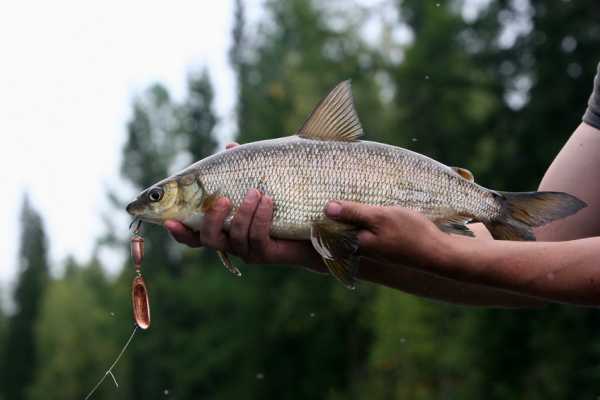
Among the vast family of salmon fish inhabiting the waters of Karelia, whitefish occupies a worthy place.
Adult whitefish can reach a considerable weight, up to several kilograms. At the age of three, whitefish spawn for the first time, in the fall or early winter.
Usually it stays at depth and only occasionally appears in shallower places. Its food consists of various crustaceans and insects.
Spring-summer fishing for whitefish begins immediately after the snow melts, and then when the water becomes clean and transparent. Amateur fishermen usually catch whitefish with a lightweight fiberglass rod, which allows them to make long casts, maneuver the tackle, and catch large fish. The diameter of the main line is 0.22-0.25 mm, the leads - 0.15-0.17 mm. The float is usually simple: an elongated foam plastic float with a long antenna and a small keel, but weighted. Several sinkers are used, with the heavy sinker placed closer to the float, and the smallest one near the hook. Reels use inertial ones. An important part of the equipment is a small jig with a cambric attached to the hook.
Since the beginning of summer is marked by a massive flight of mosquitoes, which gather in clouds over the water, while often falling into this water, the whitefish does not sleep at this time.
You, in turn, have an excellent opportunity to catch whitefish. From mid-July with the onset of heat and almost until September, biting is not acceptable due to the fact that nature gives the whitefish a lot of natural food in the form of insects, and your bait is unlikely to interest it.
As mentioned above, whitefish begin to spawn in mid-autumn, so they begin to feed heavily before spawning, and during this period of time the bite resumes. At the same time, you can even catch whitefish from the shore, albeit small ones, but large ones - near the fairway, the deeper part of the river.
The whitefish bite is very sharp. Taking off diagonally towards the floating bait, it lies on its side, and having grabbed the prey, it goes into the depths, while the float, as a rule, dives sharply. But there is an exception, because whitefish, judging by its habits, is a cunning fish. Having taken the bait, he may not move, in this case the float begins to slowly sink, and you get the impression that a hook has occurred. After hooking, the whitefish begins to stubbornly resist. Therefore, from a boat, as in the case of salmon, it is more convenient to fish together, helping each other when fishing. Often this cunning one dives under the boat, and when it is brought to the shore, he lies on his back and goes into the depths. As he does so, the hook flies out of his mouth.
Source Features
The reservoir extends from northwest to southeast. The coastline is winding and flat. The eastern side of the spring is swampy. The west coast is dry and sandy. Within the boundaries of the reservoir there are several small islands.
Streams flow into the lake. The Sigovka River originates from this reservoir. Lake Whitefish is connected to Seliger through this river. Sigovka flows into the Selizharovsky reach of Lake Seliger. Lake Whitefish is connected by small streams to the Bolshoye and Dolosets reservoirs.
The source has clean and clear water. Reeds and reeds grow in the coastal zone. There is convenient access to the water from the banks. The bottom of this reservoir is sandy, without sudden changes in depth.
© Maryana 881
The area of Whitefish Lake is 2730 hectares. The length is about 9 kilometers. The drainage basin area is 9630 hectares. The maximum depth in the central part is approximately 6 meters. Closer to the coastal strip, the lake bottom can be felt at a distance of 4–5 meters from the water surface. The reservoir stands at 219 meters above sea level.
Whitefish fishing in Karelia
Whitefish is found in many reservoirs of the Republic of Karelia. This is a valuable and tasty fish that many people want to catch. You can read in detail about its lifestyle and habits in this section, but here we will talk about the Karelian whitefish, which has its own characteristics.
Whitefish in Karelia occurs in different forms (subspecies), which depend on its habitat. Often in one body of water there can be several forms of whitefish, as for example in Lake Onega. There is fundamentally no difference between them from a fishing point of view, and it is often very difficult to distinguish different subspecies from each other. However, the main types of whitefish are:
And these forms can already be classified into many subspecies.
Whitefish fishing in Karelia
Whitefish can be caught using all traditional gear. Most often it is caught with a float rod, but large whitefish in Karelia can be caught with a spinning rod, but you just need to use the smallest spoons.
This fish is caught in summer and early autumn; as is known, it usually spawns in October, but this period can last until winter. In winter, you should look for whitefish in deep holes, where they live in schools. Karelian fishermen, who know the topography of reservoirs well, rarely leave without a good catch.
In spring, you can start catching whitefish in Karelia after the water becomes clear. In South Karelia this is already early to mid-May, and in the northern regions the water can be cloudy until mid-June. This especially applies to rivers.
Where to catch whitefish in Karelia?
This fish is found in almost any more or less large lake. Here is just a small list: Sandalwood, Gimolskoye, Nyuk, Syamozero, Yanisyarvi, Pulozero, Vodlozero, Tiksheozero, Putkozero, Royk-Navolokskoye, Shuezero, Segozero, Muezero, Kuchozero, Yushkozero and many others, descriptions of which you can find on our website. Whitefish can also be found in many rivers of the Republic of Karelia.
Lake Onega is traditionally of the greatest interest; this fish can also be caught well in Ladoga.
Search for whitefish
Whitefish can be caught all twelve months, including the heat of July and the dead of winter in January. That's why they go fishing for whitefish regularly. But long-term observations of bites have shown that the best bite of this predator in most Russian regions occurs in mid-autumn.
This is primarily due to fattening up before the coming long and harsh winter. Whitefish are looked for where there are boulders, bottom folds and underwater mounds on the river bottom. But this fish is often caught on the relatively flat bottom topography, where there are no bends or hills.
If aquatic grasses grow on the bottom, then whitefish can only be caught here during spring spawning. These spots are inhabited by pike, but there are no whitefish here. It has long been noted that where there is whitefish, there is no pike. Whitefish can be found near river mouths, near river islands, near bridges and hydroelectric power stations.
If schools of carp and bream are found in a reservoir, then with a high degree of probability you can also find whitefish here. If whitefish does not get along with predators such as pike, then it feels great when large peaceful fish swim near it. Whitefish and bream become so accustomed to each other that you can often catch both types of fish on a fishing rod.
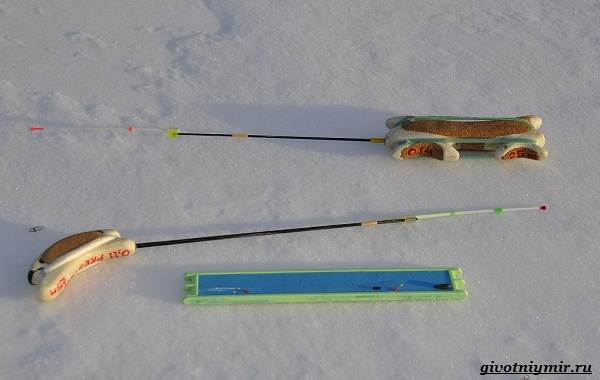
The subtleties of catching whitefish in summer and winter
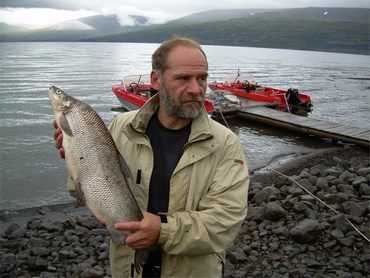
This fish is caught in the European part of Russia, mainly on the Kola Peninsula, the Northern Urals and even in the Leningrad and Vologda regions. In more southern reservoirs, this fish practically does not live or is extremely rare. The value of this fish lies in its very tasty and healthy meat, valued by gourmets. In addition, whitefish meat is considered dietary and very healthy. A large number of different dishes can be prepared from this fish. Today, whitefish have a valuable commercial value, and fishing for whitefish is not allowed everywhere where it lives. In some reservoirs, where there used to be a lot of this fish, its population has decreased significantly and a fishing ban is being introduced in order to restore the number of fish.
Lures
Whitefish is a predatory fish, which is why fish are used as bait. Since whitefish do not have a very large mouth, the bait should have a low profile. The following is used as fry for catching whitefish:
- rudd;
- small roach;
- bleak;
- minnow;
We suggest you read: In which wind direction does the fish not bite?
Best suited for spinning fishing:
- elongated oscillating spoons;
- deep wobblers - minnow;
- silicone vibrating tails and twisters;
Whitefish is a very attentive and cautious fish. When catching it, it is better not to wear shiny things. The glass of the glasses should be frosted; it is better to remove watches, rings, and chains in advance. Tools and equipment should be hidden in a bag or pockets.
To catch whitefish, various animal baits are used: worms, maggots, mollusk meat, maggots, bloodworms, larvae of other insects, aquatic invertebrates, and can be caught with fry. No less popular are artificial baits: various spinners, silicone baits, etc. Some anglers believe that the most successful spinning fishing for whitefish is jig.
Forum
There are up to 6 breeds of whitefish in Pyaozero. The lake form of whitefish, known among the local population as rantasijka, or coastal whitefish, is of greatest importance both in terms of quantity in catches and in terms of mass distribution.
The habitats of the whitefish vary depending on the seasons of the year, feeding and spawning migrations. But still, this whitefish, to a greater extent than other whitefish of the lake, is associated with the coastal shallow part of the lake. It appears on the shores in the shallows after the lake opens up. Noticeable catches have been observed since the second half of June, when this whitefish begins to intensively fatten in the coastal zone. By mid-summer, when the water in shallow areas warms up strongly, the redfish moves to deeper places, where it remains until the autumn cooling of the water, approximately until the second half of September. In autumn, the habitats of mature and immature whitefish are usually separated. Mature whitefish are concentrated in pools and on rocky placers near islands and in individual bays, while juveniles and immature whitefish are usually found in sandy shallow water, less often on spawning grounds, where they feed on whitefish and vendace eggs.
Rantasiya spawns on shallows with hard soils (sand mixed with pebbles and individual stones). The depth of the spawning grounds does not exceed 3-4 m. Spawning time is the second half of October, water temperature is 4-5.5°. Spawning is quite extended and sometimes lasts until November 10-15; Mass spawning occurs at the end of October. The largest spawning concentrations of this whitefish are observed off the western and northern shores of the island. Maloshuari, at Fr. Kurgonshuari, in the bays of Paiguba and Chulkolahti, at the southern end of the island. Lupchang and Fr. Talvishuari. The fertility of whitefish weighing 1 kg is approximately 20 thousand eggs. Sexual maturity occurs at 4-5 years, at 175-200 g of weight. The coastal whitefish is a relatively slow-growing form. Whitefish are caught during the entire navigation period. Until September it is caught with a seine, but later mainly with nets.
The second form of Pyaozer lake whitefish is represented by deep-sea whitefish, locally called Lattaneni. It has been recorded in commercial quantities at Cape Kalliniemi, between the islands of Vartisuari and Lupchanga, off the southern coast of Maloshuari and in Umbikanda Bay at depths of 20-40 m. It is a small deep-sea whitefish: its weight ranges from 100 to 400 g. Previously, Lattaneni were hunted from the second half July until freeze-up, for which they used fixed nets with a mesh of 26-30 mm.
The third form of whitefish on Pyaozer is represented by the migratory whitefish kutcheri. It rises to the river in October to spawn. Sofyangu and its tributaries - Ponchu, Varba, into the rivers Kitti, Tawang, Olanga. Of all the large and medium-sized rivers of Pyaozer, the whitefish kutcheri does not rise only into the Pundoma River, which carries heavily swampy waters into the lake. The kutcheri whitefish spawns in rivers, mostly under rapids, at a depth of 1-3 m, choosing mainly sandy and pebble places. Its fertility is low and ranges from 7-15 thousand eggs. Sexual maturity occurs at the age of 4-6 years.
In commercial catches, kutcheri whitefish are found between the ages of four and fifteen years; the bulk of the catch falls on whitefish aged six to nine years. This whitefish grows more slowly than the Rantasian whitefish.
Small quantities of kutchery are caught in autumn on the spawning grounds of the lake whitefish Rantasija. But this is a whitefish with underdeveloped reproductive products. It does not participate in spawning.
In the total catches of whitefish in Pyaozero, whitefish kutcheri occupies the main place, especially during the period of mass entry into rivers for breeding, when it is mainly caught.
The remaining three forms of anadromous whitefish: suurisiga, lehtisiga and kukkaneni are associated with the Sofyanga River and its tributaries Poncha and Varba.
Appearance, character, habitat of whitefish
Whitefish is a valuable commercial fish of the salmon family, which is also an object of recreational fishing. This representative of the ichthyofauna lives in clean and unpolluted water bodies. It is found not only in Europe, but also in Asia and North America.
Whitefish is a predatory fish, hunts for young fish and is an orderly for water bodies. Thanks to its ability to clean rivers of such weed fish as rotan and ruffe, whitefish has received great respect among scientists and fishermen. This voracious freshwater creature has a body length of up to 1.3 meters and weighs up to six kilograms.
Sometimes you come across fish weighing up to eight or even nine kilograms, but only the very lucky manage to catch such specimens. This fish attacks well, but does not know how to defend at all. While chasing fish, whitefish develop sprint speed. It attacks its victims and eats them one by one with a huge appetite.
But as soon as the whitefish is on the fishing hook, all its fighting spirit evaporates somewhere. The fish hardly resists when fished and does not really fight for life, such as catfish or pike perch. How can one explain such passive behavior of whitefish when caught in fishing gear and traps?
Some scientists and fishermen explain this by saying that whitefish experience extreme pain when a hook gets into their soft mouth, and this makes the fish docile. But most likely the matter is different. After all, when a whitefish is caught in a net, it also does not fight for life and does not even try to break the net with its massive body.
Therefore, the mystery of such a strange character of the whitefish has not yet been solved. Whitefish cannot be confused with any other fish. It has a huge mouth, a conical head, strong and small teeth and large fangs on the jaws, hard scales, two dorsal fins (regular and covered with spines), many dark stripes and spots on the fin.
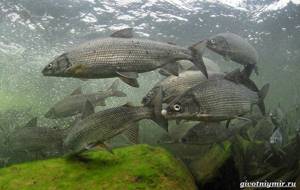
When hooked, a whitefish does not resist at all
Young whitefish are very long and thin, but when the adolescent fish grows to 40 cm in height, it becomes broad and large. On the long and wide body of this fish there is a white belly located below. The back of the whitefish is dark green in color, with wide dark stripes, somewhat reminiscent of a perch.
This predator lives in clean reservoirs with clear water; at the bottom of the reservoir there should be sand, gravel or pebbles. These fish also live where a large river flows into the sea. These fish swim to the northern seas to spawn. Some whitefish fell in love with life in sea bays and river mouths.
This large-bodied fish has a long, narrow throat that can only accommodate narrow-bodied fish. The main food of whitefish are trash fish with a long body that live in oxygen-saturated waters. Whitefish not only loves clear, clean and oxygen-rich water, it also requires a deep body of water to live.
But this predatory fish hunts in shallow water. Whitefish is an excellent hunter. Thanks to its large eyes, it can attack fish even at night. He skillfully uses this advantage and therefore people usually fish for him in the morning, at night or in the evening.
But if the whitefish is about to spawn or is very hungry, then this predator can go hunting on a sunny day. Whitefish live up to the age of twenty, but most often the fish caught are middle-aged individuals (from six to nine years old).
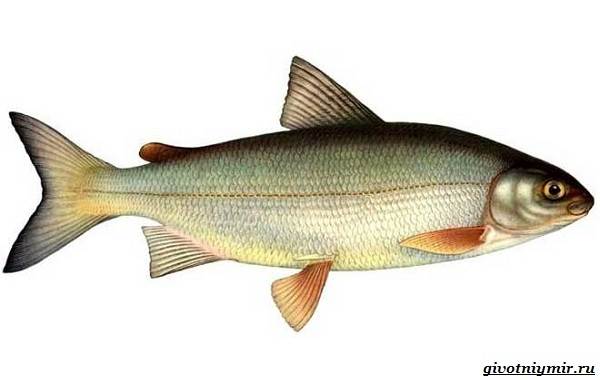
Whitefish is a predatory fish
Fishing in Karelia
Karelia is a protected region, where the skating rink of civilization has not yet passed. The natural beauty of this untouched area is simply mesmerizing. Finding yourself among the picturesque landscapes and breathing in the clean, dizzying air, you want to stay here forever. But this is not what attracts fishermen from all over Russia to the republic. They are looking for what they find everywhere – unforgettable fishing in Karelia. And she is truly memorable here. How can you forget catching a large whitefish or salmon if you are a resident of the Moscow region? Of course not.
There are more than 26 thousand deep rivers in Karelia, and almost three times as many lakes. There are so many fish there that even ordinary ecotourists become seasoned fishermen in a matter of days.
Features of the region
When going to Karelia for a multi-day fishing trip, it is worth considering some important nuances. For example, you immediately need to decide on the type of active recreation. What will it be like: comfortable, at a camp site with all the amenities, or wild, in your own tent far from populated areas? If the choice is made in favor of the second option, then you need to think through every little detail and take everything you need with you. You will definitely need means of protection against the ubiquitous insects, because near bodies of water there are always a lot of ticks, mosquitoes and midges. There are also creeping reptiles - poisonous snakes. Although they never attack first, high boots will not be superfluous.
What kind of fish is caught in Karelia?
In addition to toothy pike, in almost all Karelian reservoirs you can catch perch, roach, silver bream, rudd, and ruffe, but the listed species are also found at home; no one will go fishing for them tens of kilometers away. The northern region is attractive to fishermen due to such lake and river inhabitants as salmon, grayling, trout, vendace, whitefish, and palia. These species are considered migratory because they spend more time in the White Sea, and visit rivers and lakes only for the sake of procreation. The exceptions are large lakes - Ladoga, Onega, Sredne Kuyto and a number of others. In them, the chances of catching the same salmon or palia are quite high.
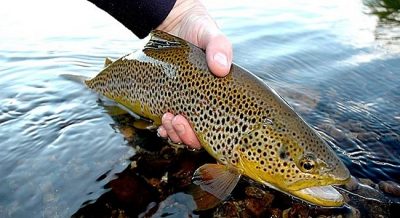
Heat-loving crucian carp, tench and catfish are rare in these places, although if you wish, you can find a reservoir where they feel great and are caught well. Separately, it is worth mentioning bream. Standard Karelian bream is a fish weighing up to 3 kg, which is caught not with maggots or corn kernels, like ours, but with a good bunch of dung worms. You should look for these on calm lakes or quiet sections of rivers.
Many spinning anglers come here for the pike perch. The fanged predator is usually hunted from a boat, fishing for exits from pits and places with a rocky bottom. With a successful combination of circumstances (favorable weather, high activity of the target, and so on), you can return from fishing with such a catch that everyone will be jealous.
This is not all that is caught in the reservoirs of the Republic of Karelia. Anglers often find bleak, minnow, spined lance, and sculpin on their hooks. True, no one needs this little thing, except for use as live bait. Moreover, sometimes it greatly interferes with the serious fishing process.
Extreme holiday
Whitefish Lake is ideal for extreme sports enthusiasts. They won't be bored here either. In 1941, an American plane sank in the pond. Of the 17 crew members, 10 died under water. The plane was never raised, and it is still in the center of the lake. It is used as an object for wreck diving - a special type of diving that involves descending underwater onto sunken objects. The Douglas plane is located at a depth of 6 m, most of it is silted, and few divers manage to climb inside. Viewed from a depth of 3 m.
Recommended gear
What tool can you go with? It all depends on personal preference. Fans of sports fishing with a fishing rod, in addition to the rod itself, should take a set of floats for different fishing conditions, a supply of fishing line, hooks and weights. Of course, you should have a reel in your arsenal that allows you to fish at longer distances.
You will also have to take bait with you, since finding a worm among the Karelian stones is very problematic. You can also take maggots; in the local reservoirs this mobile larva has no competition. True, it has one significant drawback - its shelf life is too short. For this reason, it is advisable to use maggots in the first days, and then you can switch to caddis flies, pearl barley, semolina and even regular bread crumbs.

There are many predators in the region's waters, so spinning fishing is quite a popular activity here. There is no point in giving any advice on choosing tackle; it all depends on what kind of prey the spinner is targeting. For example, you can catch perch with an ultralight set, but a superlight rod is unlikely to withstand salmon. The supply of equipment must be impressive, because the bottom of Karelian lakes and rivers is mostly rocky, and unfortunate losses are not uncommon here. Including in shallow water. It would seem that here it is, a hooked spinner, very close. You just need to go waist-deep into the water and get it out. But no one wants to go into this very water, because it is very cold (even in summer).
The more different baits the fisherman has, the higher the chances of success. And there are more opportunities. Therefore, we take with us silicone, spinners, spinners, wobblers and other baits of all existing sizes and colors. The predators here are unpredictable. On the same body of water, a pike or perch can change their preferences several times a day: in the morning they take large oscillating spoons, at lunchtime they are actively interested in edible rubber, and in the evening they switch again to “hardware”.
Peaceful fish can be successfully caught using feeder gear. Depth maps in Karelia are scarce, it is almost impossible to find them, and without knowledge of the bottom surface topography you can’t hope for good fishing. Therefore, a fan of English donkey needs an echo sounder like air. This useful device will help you quickly find a fishing spot.
Day 3
On the third day we got up at 8 am with two friends, our other three never came, well, we think we caught it, we go to them, I am near the village, they are to the island. In fact, the situation has not changed, it’s just the way it is. We continue to fish, feed more, and little by little the bream begins to appear. And then, 2 hours before departure, it began, he hit, the one whom we had been waiting and hoping for so long, first at my place, then at a friend’s, and they dragged him in turn to both the goat and the float. Friends came, they still didn’t catch anything except roach and ruffs, only 1 more white bream and one of their tents was broken by the wind. In general, they went to get ready to go home, and we fished for another half an hour and also left, although the bite was still the same as from a machine gun (the bite did not reach the machine gun). As a result, 2 hours before departure we caught more than the night and 2 days before. The catch this morning from 10 to 13 with roach together was 4.5 kg for me, 5 kg for my friend, not bad.
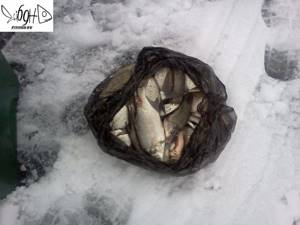
In general, I have never seen so many people in Shiga, and so many cars too. All the fish seem to have been scared away; they hid in their “holes” and won’t come out. On the third day it only started to bite us on Monday, when everyone had left, and even then we were practically alone in the area, far from the crowd. We gained some impressions, took a break from our wives and children, and caught some fish, which is what I wish for you too! Happy fishing. NHNCH everyone!! Sincerely, Tver Fisherman's Blog fish69.ru
Where is the best place to go as a savage?
Let's look at the most popular bodies of water in Karelia, where you should go wild fishing:
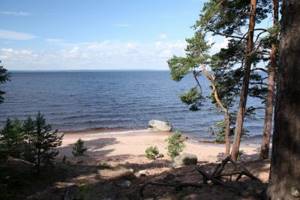
Lake Ladoga is the largest body of water with inexhaustible reserves of fish. Thanks to fisheries surveillance, local and visiting poachers cannot expand their black fishery to its full potential. Underwater inhabitants multiply and reach decent sizes. You can catch trophy pike and pike perch, burbot are caught at night, bream and whitefish are biting well. Salmon and trout are less likely to be hooked, but such catch brings so much joy. In total, there are more than fifty peaceful and predatory species in the lake. It is better to fish in quiet bays and small bays, as well as near numerous islands. Since the shores of Lake Ladoga are not very convenient for fishing, it is advisable to come here with a boat. Those who are eager to hunt salmon should try their luck on the northern side of the lake. It is there that the Vidlitsa, Svir and Burnaya rivers flow into which Ladoga salmon and trout spawn. A sterlet or sturgeon may also be on the hook, but, unfortunately, this happens less and less every year.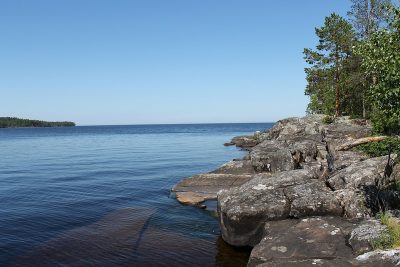
Lake Onega is smaller than Ladoga, but is in no way inferior to it in popularity. At the height of the season, a whole army of fishermen gathers on its shores. Basically, these are groups of several people united by a common hobby. There are also many who combine fishing with family outdoor recreation. If the choice fell on Lake Onega, then you need to take care of a special license for salmon fishing in advance; without it, catching this fish is prohibited. Roach and bream, pike perch and pike are also well caught in the reservoir.
Pyaozero is a large freshwater reservoir in the Louhi region, located in the north of the republic. The average depth is 15 meters, there are also 50-meter holes. Compared to other lakes, there are few species living in this lake (16 in total), but you can imagine what kind of fish can live at such a depth. Trout, for example, can be caught weighing up to 10 kg! The grayling here are also decent, which has long been appreciated by fans of spinning fishing. Instances weighing 1 kilogram are considered standard. The same can be said about pike perch.
If we talk about rivers, the most attractive in terms of fishing are Keret (Loukhsky district), Voinitsa (Kalevalsky district), Kolezma (Belomorsky district) and Kem (Kemsky district). No one has ever left here without a catch.
Seasonal fishing in Karelia
The main flow of amateur fishermen is observed in the summer, during the holiday season, but in the heat the fish bite somewhat worse than during the spring feast (before and after spawning). In June the bite noticeably subsides. The second surge occurs with the arrival of autumn. The first temperature drops in September force underwater inhabitants to begin preparing for winter, that is, to actively feed and accumulate fat. Already in November, in the northern part of the region, on whose reservoirs the ice becomes earlier, the ice fishing season starts.
